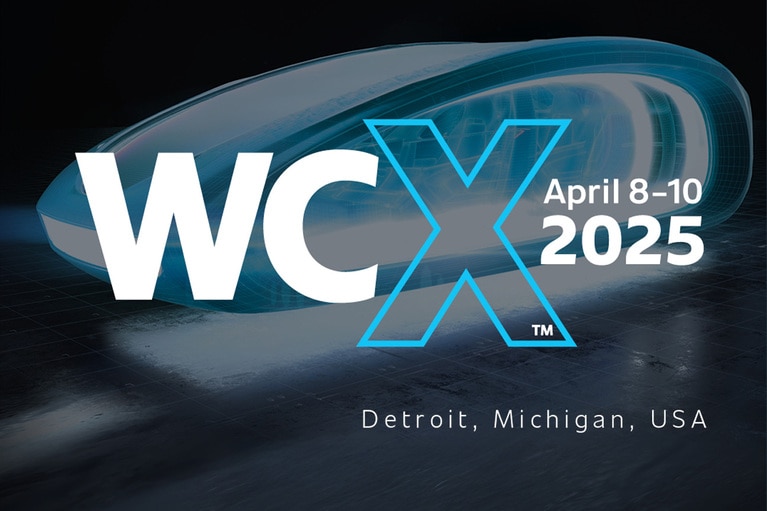A HV battery that drives the powertrain and an improved 12-V battery that performs essential offloads are required for EVs.
Today’s automobile battery must do a lot more than just start the car and keep the radio on for the journey. In the last 10 years, the amount of electricity required by car features and electronic gadgets has doubled, and it is expected to increase again in the next five. The 12-V battery is responsible for powering everything from heated seats and entertainment systems to cutting-edge safety features like pedestrian-detection systems, as well as sustaining the car’s electrical network during the trip.
A high-voltage (HV) battery that drives the powertrain and an improved 12-V battery that performs essential offloads are required for electric automobiles. When the HV system is turned off, the 12-V battery is used to safely initialize the HV battery and to power vehicle applications. During the driving cycle, the HV battery recharges the 12-V battery and maintains loads.
Let’s examine the characteristics of this technology with Nicolas Richard, director of EMEA automotive business development at Vicor.
POWER ELECTRONIS NEWS: What is the future of the 12-V lead-acid battery?
NICOLAS RICHARD: Europe has decreed that no new cars will have lead-acid batteries after 2030, creating a considerable challenge for OEMs to find alternative solutions.
While this may seem like a daunting task, it also presents a tremendous opportunity to eliminate the environmentally toxic lead-acid battery while also reducing weight in a vehicle and improving overall efficiency. It can also reduce the battery warranty costs faced by manufacturers.
PEN: What is the function of the 12-V battery in a vehicle today?
RICHARD: The most essential role of the 12-V battery has been to provide a reservoir of power for loads that require a lot of power. The typical load in a vehicle will have two types of current draw: one for start, particularly cold-crank start, and one for steady-state operation. Both require a large amount of current either to charge a capacitor or to turn an armature but then drop down as a steady-state reservoir.
PEN: What are the technical considerations that need to be supported if the 12-V battery is eliminated?
RICHARD: Slew rate or transient response. Replacing the 12-V battery in a vehicle with a traditional converter may cause the load voltage to drop low enough that the load turns off, thus causing a reboot in a vehicle. Automobile manufacturers typically require 250A/ms for their fastest loads, which 12-V batteries can achieve (75A/30µs).
PEN: What alternative 12-V battery technologies exist?
RICHARD: Replacing the 12-V lead-acid battery with a 12-V Li-ion battery is one option. While this slightly reduces weight, it retains the decades-old legacy of the 12-V Power Distribution Network (PDN), which yields limited additional benefit. The other option is to support a 12-V PDN powered from the primary 400-V or 800-V battery in electric vehicles and hybrid EVs/plug-in hybrid EVs.
PEN: What are the benefits and disadvantages of these technologies?
RICHARD: Simply replacing the 12-V lead-acid battery with a 12-V Li-ion battery saves approximately 55% in weight; however, it has a high impact on costs. The 12-V Li-ion battery needs a battery management system to control the charging and maintain the full battery operation over the vehicle’s life.
Furthermore, adding a bulky DC-DC converter from HV to 12V (with a voltage and current regulation feature) is needed to recharge the 12-V Li-ion battery and supply the electrical loads.
However, this adds limited benefits. Conversely, it adds weight, vehicle packaging complexity, and system cost while also reducing overall vehicle reliability.
By contrast, eliminating the 12-V battery altogether removes 13kg from the vehicle and can improve the cargo space by 2.4%.
PEN: What loads will continue to rely on 12V?
RICHARD: Most of the safety loads and very low-power loads, such as LED reading lights for the cabin and electric windows, will stay on 12V. All the power loads, such as water and oil pumps, will move to 48V or HV.
There is a lot of research going on to improve ride comfort. As vehicles become more autonomous, the travel experience for drivers and passengers will become more like riding on a train, which they expect to be very smooth. Achieving this smooth ride requires equipment such as electric anti-rolling bars or active suspension, which need a lot of power.
PEN: Can an EV’s main traction battery be used to supply these loads?
RICHARD: It makes sense to use the traction motor battery, which is the largest energy source in the vehicle, to down-convert to different safe voltages. Typically, the traction motor battery in an EV is either 400V or 800V.
A better approach to solving this problem is to completely rethink the PDN in a vehicle: Eliminate the physical 12-V battery and replace it with a 12-V “virtual” battery from the primary EV battery.
The ideal vehicle architecture would be one HV battery used to power the powertrain and all the auxiliary loads, provided it can meet the necessary transient response requirements. Vicor high-density bus converter module technology enables this approach by virtualizing a low-voltage battery (48V or 12V) directly from the HV battery.
A modular power approach combined with innovative topologies allows you to far exceed the slew rate — the transient response — of a 12-V lead-acid battery (75A/30µs). Using power modules and a sine-amplitude converter, you can process thousands of amperes from the HV battery to the load, eliminating any dips or loads falling out of regulation.
PEN: What are the advantages of doing this?
RICHARD: The major advantage is that there is only one battery in the vehicle, saving weight. It also simplifies the architecture and reduces the packing requirements, which can be complicated for a heavy 12-V battery.
This method also reduces the warranty costs for the vehicle OEM. The 12-V battery is usually under warranty for three years. During this time, the responsibility of changing it if it fails rests with the vehicle manufacturer, leading to potentially considerable costs.
The Vicor modular approach allows engineers to achieve approximately 300 combinations of power delivery by using just three to four scalable building-block modules of various types. Vehicles ranging in size from a small city car to a large SUV can all be powered from a common power platform using the same DC-DC converter. Scaling up simply involves the addition of more power modules.
This design approach saves hundreds of hours of time and a large amount of resources, allowing OEMs to get out in front in the electrification race.
PEN: What are the main considerations to bear in mind when using this method?
RICHARD: A traditional PDN based on a discrete DC-DC converter design can consist of over 200 bulky components, whereas Vicor advanced technology provides a single high-density power module. The time savings for an engineering design team are significant, with qualification required for only one module compared with over 200 individual components for the same function.
PEN: What extra architecture or components are needed to achieve this?
RICHARD: No extra components are necessary, as an HV to 12-V DC-DC converter is already an essential component for EVs. Vicor’s technology brings additional features because of the fast transient response that results from the removal of the 12-V battery.
Vicor is also conducting research into redundancy of components to improve functional safety.
PEN: What solutions does Vicor offer for this application?
RICHARD: Using zero-voltage, zero-current switching (ZVS/ZCS), Vicor BCM™ bus converters operate at higher frequencies than conventional converters, making them more responsive than a physical battery.
For example, the BCM6135 operates at 1.2 MHz and, unlike a conventional ZVS/ZCS resonant converter, operates within a narrowband frequency. The BCM’s high-frequency operation provides a fast response to changes in load currents and a low-impedance path from input to output.
Fixed-ratio conversion, bidirectional operation, fast transient response (higher than 8MA per second), and a low-impedance path collectively enable the BCM to make an HV battery appear like a 48-V battery, which we term “transformation.” This ability to transform a power source is both the key benefit and key differentiator when compared with conventional converters.
Prior joining Vicor, Nicolas worked at IDT (Renesas) as the North America Automotive Segment leader focused on technical sales in powertrain, infotainment and ADAS based systems. Prior to IDT, he spent four years at ON Semiconductor in the role of Field Application Engineer leading an internal design and applications team as a “Concept to Product Champion” heading up the company’s new product growth strategy for automotive sales in Detroit, MI. His background also includes nine years of engineering and development at Continental Automotive where he held various engineering roles in their hybrid and electric vehicle divisions designing DC-DC converters and traction inverters.
Nicolas Richard, Director Automotive Business Development, Vicor Europe










